#DBMS Tutorial
Explore tagged Tumblr posts
Text

DBMS Tutorial - Learn Database Management System
A DBMS (Database Management System) is software that allows users to store, retrieve, and manage data efficiently. This tutorial introduces key concepts like data models, SQL, normalization, and transactions. This DBMS tutorial is ideal for beginners; it helps you understand how databases work and how to use them in real-world applications.
0 notes
Text
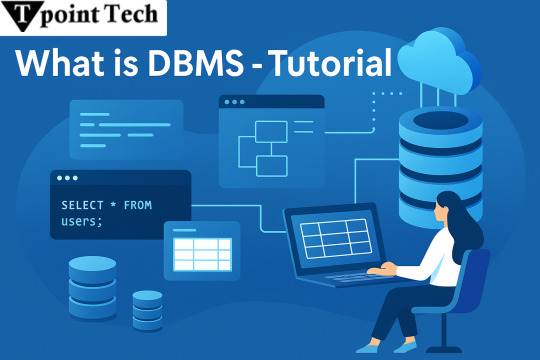
What is DBMS Tutorial?
A DBMS Tutorial is a structured learning guide that helps you understand Database Management Systems (DBMS) software, which is used to store, manage, and retrieve data efficiently.
0 notes
Text

Explore this comprehensive DBMS tutorial to learn the fundamentals of Database Management Systems, including architecture, models, SQL, normalization, and transactions. Ideal for beginners and students, this guide covers key DBMS concepts with examples to help you master data storage, retrieval, and management effectively.
0 notes
Text
Database Management System Basics: Everything You Need to Know

Learn about Database Management Systems (DBMS) and their importance in data handling. This tutorial covers types, functions, and key concepts to help you understand efficient data storage and management.
0 notes
Text
7 Mind-Blowing Real-Life Uses of DBMS You Won't Believe Exist!
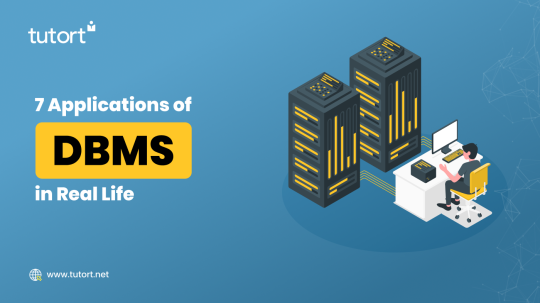
7 Applications of DBMS in Real Life
The need to efficiently handle and manage vast amounts of data has given rise to Database Management Systems (DBMS). DBMS is a software tool that enables the storage, organization, retrieval, and manipulation of data in a structured manner. While the concept of databases might seem complex, their applications in real life are remarkably diverse and impactful.
In this article, we will explore the top 10 applications of DBMS in various domains, highlighting their significance and benefits.
1. Online Shopping: Streamlining the E-commerce Experience
Online shopping has revolutionized the retail industry, and DBMS plays a pivotal role in ensuring smooth transactions and personalized experiences for customers.
E-commerce platforms like Amazon and Flipkart leverage DBMS to store and manage customer information, product details, inventory levels, and purchase history. This allows them to provide tailored recommendations, process orders efficiently, and maintain seamless communication with customers.
2. Reservation Systems: Simplifying Booking Processes
From movie theaters to airlines, reservation systems heavily rely on DBMS to handle the complexities of managing bookings. DBMS stores and retrieves data related to seat availability, customer details, and transaction records. This enables quick and accurate reservation processes, ensuring a hassle-free experience for customers.
3. Telecommunication: Powering Seamless Connectivity
Telecommunication companies rely on DBMS to manage vast amounts of customer data, including call records, billing information, and network configurations. DBMS enables efficient storage, retrieval, and analysis of this data, ensuring uninterrupted connectivity, accurate billing, and personalized services for users.
4. Manufacturing Companies: Optimizing Production and Inventory Management
Manufacturing companies deal with extensive data related to production, inventory, supply chain, and quality control. DBMS helps them streamline these processes by storing and managing data efficiently. This enables real-time monitoring, inventory optimization, and seamless collaboration between departments, leading to improved productivity and cost savings.
5. Banking: Ensuring Secure and Efficient Financial Operations
Banks and financial institutions rely heavily on DBMS to handle customer data, account information, transaction records, and regulatory compliance. DBMS enables secure storage, retrieval, and analysis of financial data, facilitating efficient banking operations, personalized services, and fraud detection.
6. Healthcare: Enabling Efficient Patient Care
Healthcare organizations manage extensive patient data, including medical records, diagnostic reports, treatment plans, and billing information. DBMS plays a critical role in securely storing, retrieving, and analyzing this data, enabling healthcare providers to deliver efficient and personalized patient care, facilitate medical research, and ensure compliance with regulatory standards.
7. Social Media: Connecting People and Enabling Personalized Experiences
Social media platforms leverage DBMS to handle massive amounts of user data, including profiles, connections, posts, and interactions. DBMS enables efficient storage, retrieval, and analysis of this data, allowing social media platforms to provide personalized recommendations, targeted advertisements, and seamless user experiences.
Conclusion
From online shopping to healthcare, DBMS has become an indispensable tool in managing data and driving efficiency across various domains. The applications of DBMS are vast and diverse, revolutionizing industries, optimizing processes, and enhancing user experiences. As technology continues to evolve, DBMS will play an increasingly important role in handling and making sense of the ever-growing volumes of data. Embracing DBMS enables businesses and organizations to unlock the full potential of data and stay ahead in a data-driven world.
Get Started with Tutort Academy Data Science Courses
As technology continues to evolve, the demand for skilled professionals in database management systems and data science is on the rise. If you are interested in learning more about DBMS and data science, consider starting your journey with Tutort Academy data science courses. These inline data science courses cover a wide spectrum of topics, including database management, data analysis, machine learning, and more. Whether you're new to the data science field or looking to upgrade your existing data science skills, our online data science courses cater to various proficiency levels.
#programming#tutortacademy#datascience#datascientist#dbms tutorial#datasciencetraining#datascienceonlinecourse
1 note
·
View note
Text
Dbms Full Form: Enhancing Data Structure And Minimizing Redundancy In DBMS
A dbms full form is a logical collection of data. It includes a set of related tables and index spaces. A database frequently stores all of the data related to a particular application or a group of linked applications. A database or an inventory database could be developed. A database management system (or DBMS) is essentially a computerized data storage system.
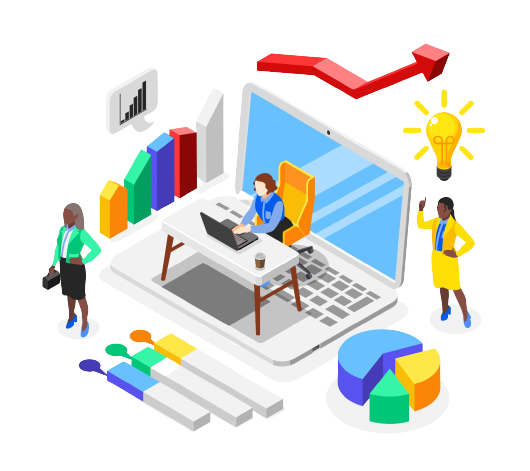
#dbms interview questions#dbms javatpoint#dbms notes#dbms definition#dbms vs rdbms#dbms tutorial#database management system#what is database#dbms full form#dbms#normalization in dbms#acid properties in dbms
0 notes
Text
Mastering Aggregate Functions in SQL: A Comprehensive Guide
Introduction to SQL: In the realm of relational databases, Structured Query Language (SQL) serves as a powerful tool for managing and manipulating data. Among its many capabilities, SQL offers a set of aggregate functions that allow users to perform calculations on groups of rows to derive meaningful insights from large datasets.

Learn how to use SQL aggregate functions like SUM, AVG, COUNT, MIN, and MAX to analyze data efficiently. This comprehensive guide covers syntax, examples, and best practices to help you master SQL queries for data analysis.
#aggregate functions#sql aggregate functions#aggregate functions in sql#aggregate functions in dbms#aggregate functions in sql server#aggregate functions in oracle#aggregate function in mysql#window function in sql#aggregate functions sql#best sql aggregate functions#aggregate functions and grouping#aggregate functions dbms#aggregate functions mysql#aggregate function#sql window functions#aggregate function tutorial#postgresql aggregate functions tutorial.
0 notes
Text
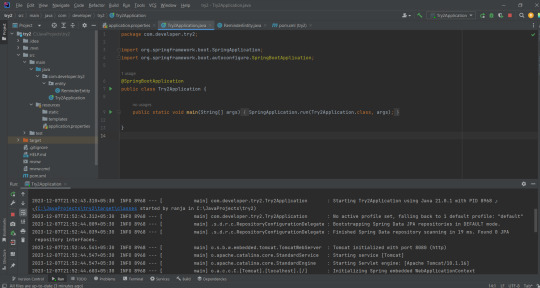
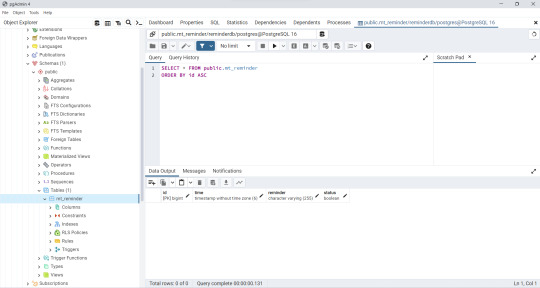

08.12.2023// 19 days to Techfest Finals
We have not been taught DBMS yet, but for the project, I followed YouTube tutorials and chatGPT and created a database in Postgres. I was even able to successfully connect the database to my Android App that I made earlier, but I am facing a little problem in passing LocalTime type data to the database.
I have been sitting at my desk from 10:00am till now(05:45 pm) and it's getting chilling cold now. So I will give my eyes, brain, and body rest today and pull my hair for the problem tomorrow. I am going to burrow in my quilt and enjoy the feeling of being home in vacations:D
Also, I saw my mom's books today arranged on her makeshift shelf and it sent flashbacks of childhood. As long as I can remember, mom has always been in academia. And now my sister and I are too:)
2 notes
·
View notes
Text
DBMS Tutorial Explained: Concepts, Types, and Applications

In today’s digital world, data is everywhere — from social media posts and financial records to healthcare systems and e-commerce websites. But have you ever wondered how all that data is stored, organized, and managed? That’s where DBMS — or Database Management System — comes into play.
Whether you’re a student, software developer, aspiring data analyst, or just someone curious about how information is handled behind the scenes, this DBMS tutorial is your one-stop guide. We’ll explore the fundamental concepts, various types of DBMS, and real-world applications to help you understand how modern databases function.
What is a DBMS?
A Database Management System (DBMS) is software that enables users to store, retrieve, manipulate, and manage data efficiently. Think of it as an interface between the user and the database. Rather than interacting directly with raw data, users and applications communicate with the database through the DBMS.
For example, when you check your bank account balance through an app, it’s the DBMS that processes your request, fetches the relevant data, and sends it back to your screen — all in milliseconds.
Why Learn DBMS?
Understanding DBMS is crucial because:
It’s foundational to software development: Every application that deals with data — from mobile apps to enterprise systems — relies on some form of database.
It improves data accuracy and security: DBMS helps in organizing data logically while controlling access and maintaining integrity.
It’s highly relevant for careers in tech: Knowledge of DBMS is essential for roles in backend development, data analysis, database administration, and more.
Core Concepts of DBMS
Let’s break down some of the fundamental concepts that every beginner should understand when starting with DBMS.
1. Database
A database is an organized collection of related data. Instead of storing information in random files, a database stores data in structured formats like tables, making retrieval efficient and logical.
2. Data Models
Data models define how data is logically structured. The most common models include:
Hierarchical Model
Network Model
Relational Model
Object-Oriented Model
Among these, the Relational Model (used in systems like MySQL, PostgreSQL, and Oracle) is the most popular today.
3. Schemas and Tables
A schema defines the structure of a database — like a blueprint. It includes definitions of tables, columns, data types, and relationships between tables.
4. SQL (Structured Query Language)
SQL is the standard language used to communicate with relational DBMS. It allows users to perform operations like:
SELECT: Retrieve data
INSERT: Add new data
UPDATE: Modify existing data
DELETE: Remove data
5. Normalization
Normalization is the process of organizing data to reduce redundancy and improve integrity. It involves dividing a database into two or more related tables and defining relationships between them.
6. Transactions
A transaction is a sequence of operations performed as a single logical unit. Transactions in DBMS follow ACID properties — Atomicity, Consistency, Isolation, and Durability — ensuring reliable data processing even during failures.
Types of DBMS
DBMS can be categorized into several types based on how data is stored and accessed:
1. Hierarchical DBMS
Organizes data in a tree-like structure.
Each parent can have multiple children, but each child has only one parent.
Example: IBM’s IMS.
2. Network DBMS
Data is represented as records connected through links.
More flexible than hierarchical model; a child can have multiple parents.
Example: Integrated Data Store (IDS).
3. Relational DBMS (RDBMS)
Data is stored in tables (relations) with rows and columns.
Uses SQL for data manipulation.
Most widely used type today.
Examples: MySQL, PostgreSQL, Oracle, SQL Server.
4. Object-Oriented DBMS (OODBMS)
Data is stored in the form of objects, similar to object-oriented programming.
Supports complex data types and relationships.
Example: db4o, ObjectDB.
5. NoSQL DBMS
Designed for handling unstructured or semi-structured data.
Ideal for big data applications.
Types include document, key-value, column-family, and graph databases.
Examples: MongoDB, Cassandra, Redis, Neo4j.
Applications of DBMS
DBMS is used across nearly every industry. Here are some common applications:
1. Banking and Finance
Customer information, transaction records, and loan histories are stored and accessed through DBMS.
Ensures accuracy and fast processing.
2. Healthcare
Manages patient records, billing, prescriptions, and lab reports.
Enhances data privacy and improves coordination among departments.
3. E-commerce
Handles product catalogs, user accounts, order histories, and payment information.
Ensures real-time data updates and personalization.
4. Education
Maintains student information, attendance, grades, and scheduling.
Helps in online learning platforms and academic administration.
5. Telecommunications
Manages user profiles, billing systems, and call records.
Supports large-scale data processing and service reliability.
Final Thoughts
In this DBMS tutorial, we’ve broken down what a Database Management System is, why it’s important, and how it works. Understanding DBMS concepts like relational models, SQL, and normalization gives you the foundation to build and manage efficient, scalable databases.
As data continues to grow in volume and importance, the demand for professionals who understand database systems is also rising. Whether you're learning DBMS for academic purposes, career development, or project needs, mastering these fundamentals is the first step toward becoming data-savvy in today’s digital world.
Stay tuned for more tutorials, including hands-on SQL queries, advanced DBMS topics, and database design best practices!
0 notes
Text
Update from March 2025 to April 2025.
SD_4:
As much as March ended on a good note, April started with a huge amount of stress. I updated my journal till March 13, and then the weeks went by following the routines I had created and trying to stick with them. It was going pretty well. I exercised almost daily, read the Mahabharat, and focused on my studies—slowly restarting everything, trying to reignite that old fire. Apart from that, I surfed through job portals and applied for a few roles. I kept an eye out for any openings in customer service at Amazon in my region. One opening came up but was filled within 24 hours—I couldn’t even apply.
The days were passing without much stress, and I was getting used to my timetable. It was my birthday at the end of the month, on the 31st. For a change, it was a pretty normal day. I reconnected with my school friends and had a video chat with them. Happy, happy mood!
On April 1st, I got a message from one of my close friends saying there was a job fair happening and suggesting we should go check it out. We went the next day, and I was happy to meet her there. We went through the fair and even sat for an interview. They told us there would be a few more interviews coming up soon and to be prepared—all for international voice processes. For the next 4-5 days, I was giving back-to-back interviews and was under so much stress. I couldn't decide what to do. In the process, I got nervous and blabbered a bit, which led to one interviewer marking me as “poor in communication.” Damn, that hurt.
Over the next few days, I became so overwhelmed that my brain just stopped functioning. I couldn’t think straight. I wanted an escape, and suddenly, I didn’t care about any interviews. My head was burning. So, that last interview? Yeah, that was it. I stopped everything—completely shut down my phone, switched it off, and tossed it somewhere near my bed.
And that… that’s when I felt like I had lifted a 100 kg weight off my head. I felt relief—like drinking a lot of water after being dehydrated for hours.
At that moment, I decided I would go through all my post-graduation subjects, revise them, start practicing coding again, and relearn concepts I had forgotten. Meanwhile, I would wait for Amazon job openings or any other suitable opportunities.
During that previous week, all my routines had crumbled. Now, I was just trying to fix everything and get my life back on track with discipline. But honestly? I’ve been failing since then. I stay in bed, go through one topic, and end up taking the entire day. And that’s how the second and third weeks of April slipped away.
In between, I applied for a Collibra role at Cognizant, but I didn’t get it—they didn’t even let me interview since I don’t have prior experience. Then, I applied for Quality Assurance Analyst, Testing Associate, and Content Test Associate roles at Amazon. All were rejected. It’s okay. I’m working on myself.
I bought a Bank Mahapack course from Adda247 to practice reasoning, quantitative aptitude, and verbal ability. Currently, I’ve completed two tutorials on digital logic and revised logic gates and universal gates. I’ve finished the introduction to quantitative aptitude, started the alphanumeric series tutorial for reasoning, and worked on sentence structure in English grammar.
Additionally, I completed three tutorials on DBMS, revisiting basic database terminologies, the RDBMS model, and functional dependencies.
🥲 April went away like this.
#my daily life#monthly update#life#procastination#motivation for success#slow life#myself#working on myself
0 notes
Text
Machine Learning Tutorial Online: Everything You Need to Know
visit the blog: https://tpointtechblog.hashnode.dev/machine-learning-tutorial-online-everything-you-need-to-know
visit for more blogs:
https://dev.to/tpointtechblog/mastering-the-basics-what-is-dbms-and-how-does-it-work-1aef
https://www.linkedin.com/pulse/top-ways-learn-java-programming-language-effectively-udhav-khera-ojquc
https://medium.com/@tpointtechblog/top-artificial-intelligence-ai-tutorial-to-learn-fast-and-effectively-a7ebc066a922
https://penzu.com/p/c348648cd68cbf49
https://www.patreon.com/posts/selenium-using-131655381?utm_medium=clipboard_copy&utm_source=copyLink&utm_campaign=postshare_creator&utm_content=join_link
0 notes
Text
Tips for Understanding Computer Databases for Homework Assignments

In today’s digital world, databases play a crucial role in managing and organizing vast amounts of information. Whether you're a student learning database concepts or working on complex assignments, understanding computer databases can be challenging. This blog will guide you through essential tips for mastering computer databases and help you complete your homework efficiently. If you're looking for computer database assistance for homework, All Assignment Experts is here to provide expert support.
What is a Computer Database?
A computer database is a structured collection of data that allows easy access, management, and updating. It is managed using a Database Management System (DBMS), which facilitates storage, retrieval, and manipulation of data. Popular database systems include MySQL, PostgreSQL, MongoDB, and Microsoft SQL Server.
Why is Understanding Databases Important for Students?
Databases are widely used in industries like banking, healthcare, and e-commerce. Students pursuing computer science, information technology, or data science must grasp database concepts to build a strong foundation for future careers. Database knowledge is essential for managing large data sets, developing applications, and performing data analysis.
Tips for Understanding Computer Databases for Homework Assignments
1. Master the Basics First
Before diving into complex queries, ensure you understand basic database concepts like:
Tables and Records: Databases store data in tables, which contain rows (records) and columns (fields).
Primary and Foreign Keys: Primary keys uniquely identify each record, while foreign keys establish relationships between tables.
Normalization: A technique to eliminate redundancy and improve database efficiency.
2. Learn SQL (Structured Query Language)
SQL is the standard language for managing databases. Some essential SQL commands you should learn include:
SELECT – Retrieve data from a database.
INSERT – Add new records to a table.
UPDATE – Modify existing records.
DELETE – Remove records from a table.
JOIN – Combine data from multiple tables.
Using online SQL playgrounds like SQL Fiddle or W3Schools can help you practice these commands effectively.
3. Use Online Resources and Tools
Numerous online platforms provide computer database assistance for homework. Websites like All Assignment Experts offer professional guidance, tutorials, and assignment help to enhance your understanding of databases. Other useful resources include:
W3Schools and TutorialsPoint for database tutorials.
YouTube channels offering step-by-step database lessons.
Interactive coding platforms like Codecademy.
4. Work on Real-Life Database Projects
Practical experience is the best way to solidify your knowledge. Try creating a small database for:
A library management system.
An online store with customer orders.
A student database with courses and grades.
This hands-on approach will help you understand real-world applications and make it easier to complete assignments.
5. Understand Database Relationships
One of the biggest challenges students face is understanding database relationships. The three main types include:
One-to-One: Each record in Table A has only one corresponding record in Table B.
One-to-Many: A record in Table A relates to multiple records in Table B.
Many-to-Many: Multiple records in Table A relate to multiple records in Table B.
Using Entity-Relationship Diagrams (ERDs) can help visualize these relationships.
6. Debug SQL Queries Effectively
If your SQL queries aren’t working as expected, try these debugging techniques:
Break queries into smaller parts and test them individually.
Use EXPLAIN to analyze how queries are executed.
Check for syntax errors and missing table relationships.
7. Seek Expert Assistance When Needed
If you find yourself struggling, don’t hesitate to seek help. All Assignment Experts offers computer database assistance for homework, providing expert solutions to your database-related queries and assignments.
8. Stay Updated with Advanced Database Technologies
The database field is constantly evolving. Explore advanced topics such as:
NoSQL Databases (MongoDB, Firebase): Used for handling unstructured data.
Big Data and Cloud Databases: Learn about databases like AWS RDS and Google BigQuery.
Data Security and Encryption: Understand how databases protect sensitive information.
Conclusion
Understanding computer databases is crucial for students handling homework assignments. By mastering basic concepts, practicing SQL, utilizing online resources, and working on real projects, you can excel in your database coursework. If you need professional guidance, All Assignment Experts provides top-notch computer database assistance for homework, ensuring you grasp key concepts and score better grades.
Start applying these tips today, and you’ll soon develop a solid understanding of databases!
#computer database assistance for homework#computer database assistance#education#homework#do your homework
1 note
·
View note
Text
SQL Server vs MySQL: Choosing the Right DBMS for Your Project
Introduction In the world of database management systems (DBMS), choosing the right one for your project can be a daunting task. SQL Server and MySQL are two of the most popular choices, each with its strengths and weaknesses. In this tutorial, we’ll delve into the technical aspects of both systems, providing a comprehensive guide to help you make an informed decision. What you’ll learn In…
0 notes
Text
MySQL vs SQL Server: Which One Should You Choose?
Databases are the backbone of every application, from simple websites to enterprise-level systems. When it comes to choosing the right database management system (DBMS), two names often come up: MySQL and SQL Server. Both are widely used, but they cater to different needs and have unique strengths.
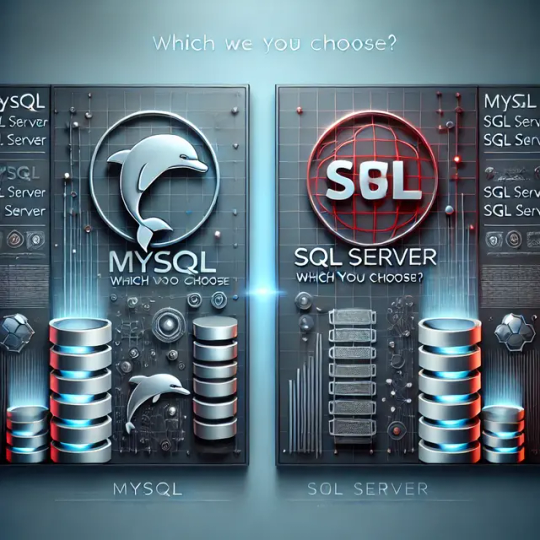
For students and professionals preparing for roles in database management, understanding the differences between these two DBMS options is crucial. Whether you're tackling MySQL interview questions for a web development role or diving into complex SQL Server interview questions for enterprise applications, this comparison will help you build a solid foundation.
This guide explores the key features, differences, and use cases of MySQL and SQL Server, helping you make the best choice for your career or project.
Read More: DBMS vs RDBMS: Which One Should You Learn for a Successful Database Career?
2. Overview of MySQL and SQL Server
To start, let’s understand what makes these two DBMS solutions so popular:
What is MySQL? MySQL is an open-source relational database management system (RDBMS) widely used in web development. It’s a part of the LAMP stack (Linux, Apache, MySQL, PHP/Python/Perl) and powers popular platforms like WordPress, Drupal, and Joomla. Its simplicity, speed, and flexibility make it an excellent choice for startups and small-scale projects.
What is SQL Server? SQL Server, developed by Microsoft, is a commercial RDBMS designed for enterprise-level applications. It integrates seamlessly with the Microsoft ecosystem, including Azure and .NET, and offers robust features for security, analytics, and transaction management. It’s ideal for handling complex and large-scale database requirements.
Here’s a quick comparison table for a high-level view:FeatureMySQLSQL ServerLicenseOpen-source (free)Commercial (free versions available)PlatformCross-platformWindows (also Linux support)PopularityWeb apps, CMS platformsEnterprise applications
3. Key Differences Between MySQL and SQL Server
While both are relational database systems, their differences can influence your decision significantly. Let’s explore the critical areas:
3.1 Licensing and Cost
MySQL: Being open-source, MySQL is free to use. It also offers enterprise editions with additional features and support, but the free version is sufficient for most small to medium-scale projects.
SQL Server: SQL Server operates on a commercial license model, which can be expensive for large deployments. However, Microsoft provides free versions like SQL Server Express and Developer Edition for students and small-scale use.
3.2 Platform Support
MySQL: MySQL is known for its flexibility and runs seamlessly on various platforms, including Windows, Linux, and macOS.
SQL Server: Traditionally optimized for Windows, SQL Server now supports Linux, giving it broader appeal for enterprise use.
3.3 Performance and Scalability
MySQL: Known for its performance in read-heavy workloads like blogs and content management systems. However, it may require additional tuning for high transaction volumes.
SQL Server: Outshines MySQL in write-heavy workloads and large-scale transactional systems, making it a preferred choice for enterprises managing massive data volumes.
3.4 Security Features
SQL Server: Offers advanced security measures like transparent data encryption, Always Encrypted, and row-level security, making it ideal for sensitive data applications.
MySQL: Provides basic security features and depends on third-party tools for advanced options.
3.5 Community and Support
MySQL: Backed by a strong open-source community, with plenty of free resources, tutorials, and forums available for support.
SQL Server: Offers professional, enterprise-grade support from Microsoft, along with extensive documentation and training options.
4. Features Comparison
Let’s break down the core features of MySQL and SQL Server to understand their strengths and limitations:
4.1 Data Types and Indexing
MySQL: Offers a basic but effective range of data types. It supports indexing, which boosts query performance, but lacks some advanced data types like XML and JSON indexing.
SQL Server: Provides a more extensive set of data types, including XML, JSON, and Spatial data. Advanced indexing techniques like filtered indexes enhance query performance significantly.
4.2 Stored Procedures and Functions
MySQL: Supports stored procedures and triggers but is less feature-rich compared to SQL Server.
SQL Server: Offers powerful stored procedures, triggers, and functions through T-SQL, enabling complex operations directly within the database.
4.3 Tools and Ecosystem
MySQL: Features lightweight tools like MySQL Workbench, which are simple and effective for smaller projects.
SQL Server: Comes with advanced tools like SQL Server Management Studio (SSMS), offering extensive capabilities for managing large databases, monitoring, and optimizing performance.
4.4 Integration with Other Platforms
MySQL: Works well with open-source stacks like LAMP and platforms such as WordPress and Joomla.
SQL Server: Integrates seamlessly with Microsoft technologies like Azure, .NET, and Power BI, making it ideal for enterprise-level solutions.
5. Use Cases for MySQL
MySQL is perfect for smaller-scale projects and web applications where performance and cost-effectiveness are priorities. Key use cases include:
Web Applications and CMS
Popular platforms like WordPress, Drupal, and Joomla run on MySQL. It’s ideal for blogs, e-commerce sites, and forums.
Startups and Small Businesses
MySQL’s low cost and ease of use make it a go-to choice for startups needing a reliable database for lightweight applications.
Data Warehousing for Small-Scale Projects
While not as robust as SQL Server for large-scale data warehousing, MySQL works well for small to medium-sized datasets.
6. Use Cases for SQL Server
SQL Server is built for enterprises requiring robust performance, scalability, and advanced analytics. Key use cases include:
Enterprise Applications
SQL Server excels in managing high transaction volumes and complex business logic, making it suitable for ERP and CRM systems.
Business Intelligence and Reporting
With tools like SQL Server Reporting Services (SSRS) and Power BI integration, it’s perfect for creating detailed reports and dashboards.
Cloud-Based Solutions
SQL Server integrates seamlessly with Microsoft Azure, enabling scalable and secure cloud-based applications.
High-Security Applications
Advanced security features make SQL Server the preferred choice for industries like banking and healthcare that handle sensitive data.
7. Factors to Consider When Choosing Between MySQL and SQL Server
When deciding which database to use, consider the following factors:
7.1 Budget Constraints
If you’re working with a limited budget, MySQL’s free open-source version is a great option. SQL Server, while powerful, can be costly for large-scale deployments unless you opt for the free Express or Developer editions.
7.2 Application Requirements
Read-Heavy Applications: MySQL is often better for read-heavy workloads like blogs or content platforms.
Transaction-Intensive Applications: SQL Server is ideal for write-heavy, high-transaction environments like banking or enterprise solutions.
7.3 Development Ecosystem
If your project leverages open-source tools and frameworks, MySQL is a natural fit. For those already invested in the Microsoft ecosystem, SQL Server offers unparalleled integration and compatibility.
7.4 Scalability and Performance Needs
Consider the future growth of your application. SQL Server is designed for enterprise scalability, while MySQL may require additional tools and configurations to handle massive datasets.
0 notes
Text
Dbms Full Form: Enhancing Data Structure And Minimizing Redundancy In DBMS
A dbms full form is a logical collection of data. It includes a set of related tables and index spaces. A database frequently stores all of the data related to a particular application or a group of linked applications. A database or an inventory database could be developed. A database management system (or DBMS) is essentially a computerized data storage system.
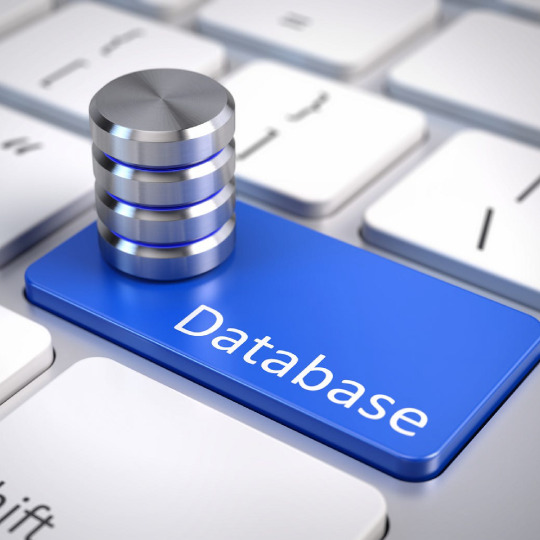
#dbms interview questions#dbms javatpoint#dbms notes#dbms definition#dbms vs rdbms#dbms tutorial#database management system#what is database#dbms full form#dbms#normalization in dbms#acid properties in dbms
1 note
·
View note
Text
DBMS TUTORIALS | DATABASE MANAGEMENT SYSTEM TUTORIAL FOR BEGINNERS | FULL LECTURE COURSE IN HINDI
ज्वाइन करें ऑनलाइन कोचिंग क्लासेज आज ही -ऑफर-*पहली बार में ही … source
0 notes